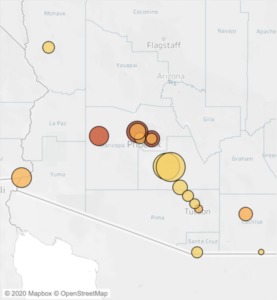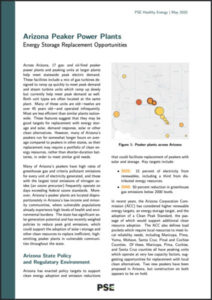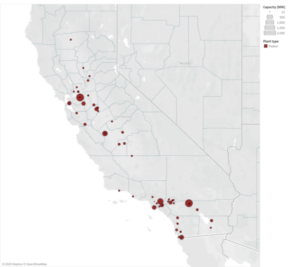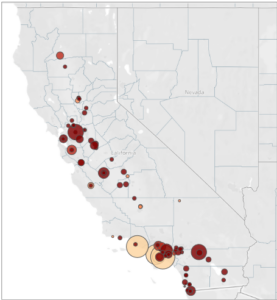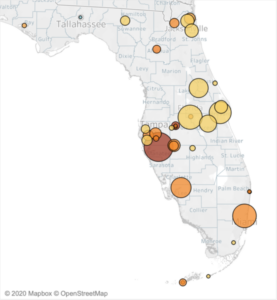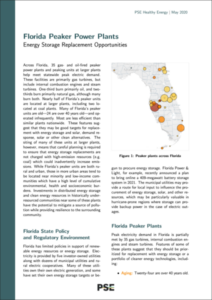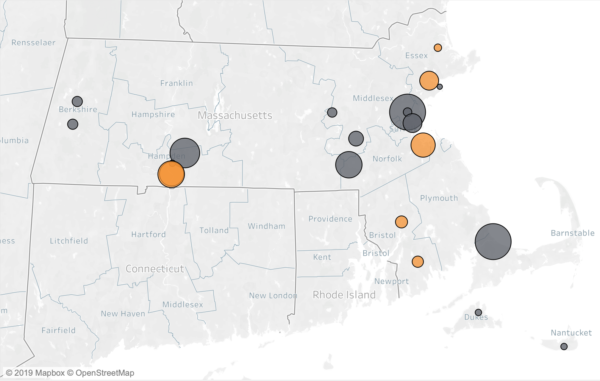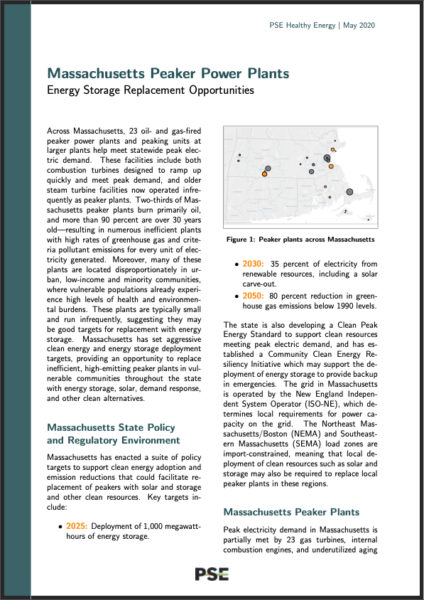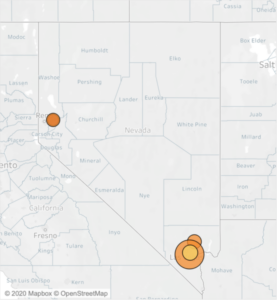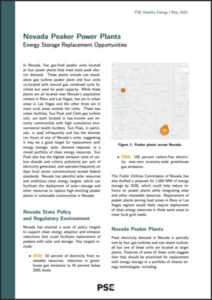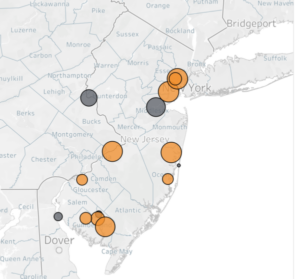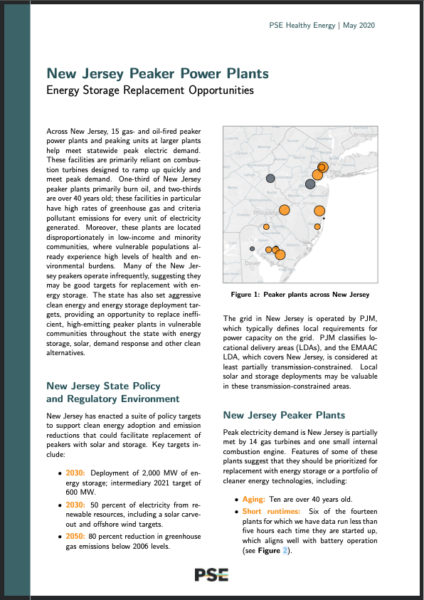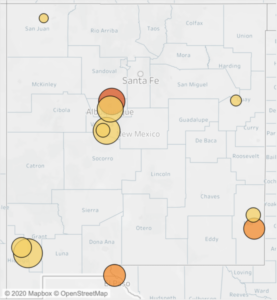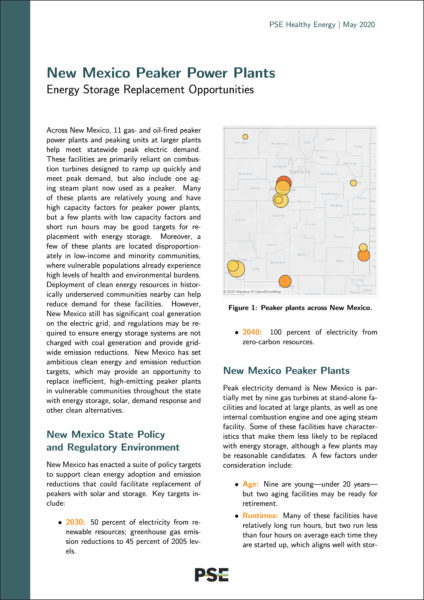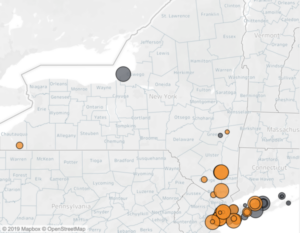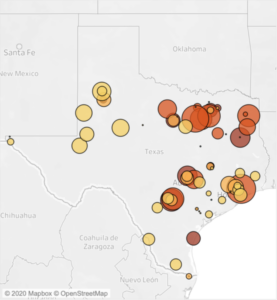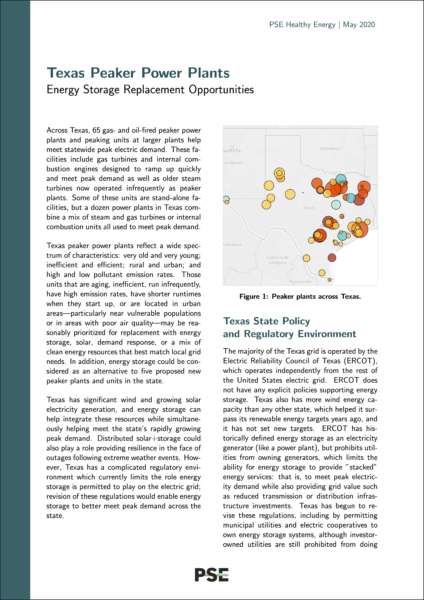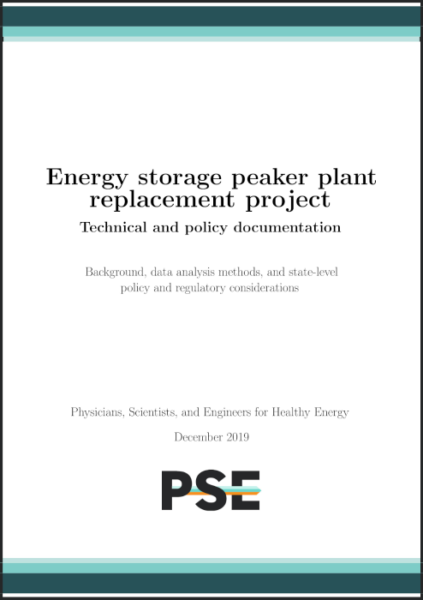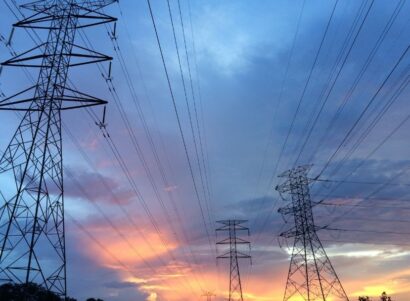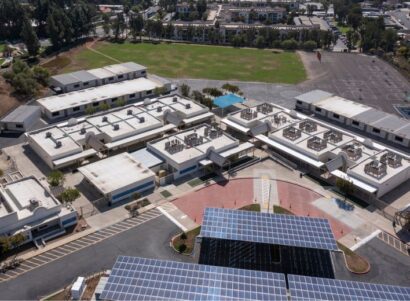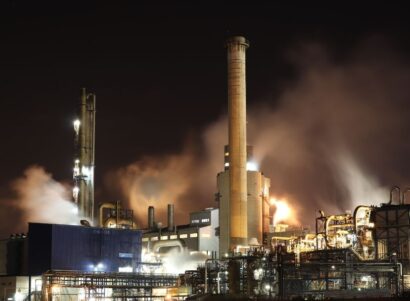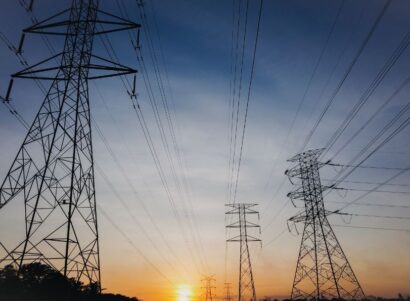The United States relies on more than 1,000 natural gas- and oil-fired peaker power plants across the country to meet infrequent peaks in electricity demand. These peaker plants tend to be more expensive and inefficient to run for every megawatt-hour generated than baseload natural gas plants and emit higher rates of carbon dioxide and health-harming criteria air pollutants. Peaker plants are also typically disproportionately located in disadvantaged communities, where vulnerable populations already experience high levels of health and environmental burdens. Renewable energy and energy storage systems are beginning to emerge as competitive replacements for this fossil fuel infrastructure. Simultaneously, numerous states across the country are designing incentives and targets to support energy storage deployment. Together, these developments provide a unique opportunity to use energy storage to strategically displace some of the most polluting peaker power plants on the grid. In this screening analysis, we identify peaker power plants across nine states that may be prime candidates for replacement based on operational and grid characteristics, and whose replacement may yield the greatest health, environment and equity co-benefits. This approach aligns state efforts to adopt energy storage with environmental and societal goals. We supplement our screening analysis with a discussion of how storage adoption and peaker plant replacement is affected by the policy and regulatory environment in each state. Below, we report our findings for each individual state in our study: Arizona, California, Florida, Massachusetts, Nevada, New Jersey, New Mexico, New York, and Texas. These findings include state-level summaries, interactive data visualization tools, and technical documentation summarizing data, methods and the policy and electricity market landscape. This research was originally published in 2019. The data was last updated October 2024.
Arizona
Arizona has 16 gas- and oil-fired peaker plants and units at larger plants, which are aging, inefficient, and tend to be located in the state’s low-income communities and communities of color. These facilities have low capacity factors but longer run hours. Given the state’s plentiful solar potential, their best replacement may be a mix of solar+storage or a portfolio of clean energy resources. Learn more about Arizona:
California
Peak electricity demand in California is partially met by nearly 80 power plants, which are located disproportionately in the state’s disadvantaged communities and operate frequently on poor air quality days. State renewable energy policies and energy storage targets align well with replacing these plants, and California has begun to deploy energy storage in lieu of peaker plants across the state. Learn more about California:
Florida
In Florida, nearly half of the state’s 45 peaker power plant units are located at larger plants, and many are old, inefficient, infrequently used, and have high emission rates (over half are more than 30 years old). Florida has few supporting policies, but local utilities have begun solar+storage procurements. Learn more about Florida:
Massachusetts
Massachusetts has 21 peaker plants and units at larger plants, which are aging, have high pollutant emission rates (just under half burn oil), and are located disproportionately in low-income communities and communities of color. The state’s 2030 energy storage targets and Clean Peak Standard provide an opportunity to replace these plants with cleaner resources. Learn more about Massachusetts:
Nevada
Nevada has six peaker power plants and peaking units at larger plants, with one more proposed plant in the works. These units are located near the state’s cities, and while two are in rural areas, the other units are located in low-income and minority communities in urban Las Vegas. Their operations align well with solar+storage. Learn more about Nevada:
New Jersey
New Jersey has 25 peaker plants and units at larger plants, many of which are aging and one-quarter of which burn oil. These plants are disproportionately located in the state’s low-income communities and communities of color. New Jersey has set 2030 energy storage targets that provide an opportunity to replace these plants with cleaner resources. Learn more about New Jersey:
New Mexico
New Mexico has 11 gas- and oil-fired peaker power plants and units, many of which are relatively young, run for long periods, and have high capacity factors. However, a few of the state’s less efficient, less used, and more urban plants might be good candidates for replacement with a portfolio of clean energy resources. Learn more about New Mexico:
New York
New York has 62 oil- and gas-fired peaker power plants and peaking units at larger plants, more than a third of which burn oil and many of which are located in areas the state considers to be environmental justice communities. New York has a suite of initiatives that support the replacement of these facilities with energy storage and other clean resources, including a new limit on emissions of nitrogen oxides from peaker plants by 2025 and a 3,000 megawatt energy storage target by 2030. Learn more about New York:
Texas
Peak electricity demand in Texas is met in part by 54 gas-fired peaker plants and units at larger plants, ranging from young to old, rural to urban, and with a wide range of operational characteristics. Energy storage may be a promising alternative to proposed new peaker plants in Texas, in addition to replacing facilities with higher emission rates or located in vulnerable communities. Learn more about Texas:
Technical Methods and Policy and Regulatory Framework
Technical methods and data sources for the peaker replacement project are available in our technical and policy documentation. We also provide an overview of state policies affecting energy storage and peaker power plants, as well as a discussion of electric transmission grid considerations.
Contact us: For questions, comments, or to request a walk-through of these data visualization tools, please contact us at: info@psehealthyenergy.org
